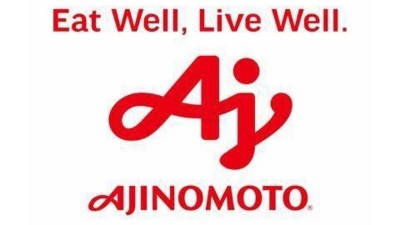Go fast or go home: Why food and beverage firms need to innovate quickly to meet consumer needs amid COVID-19
The discussion was held during the second FoodNavigator-Asia Unlocking Innovation Online Series webinar, on the topic of ‘New Product Development and the Evolving Consumer Landscape’. (Listen on demand here)
The five-person panel consisted of Lars Bredmose, senior director of dairy health at Chr. Hansen, Eric Weisser, senior director of growth platforms at Ingredion APAC, Dr Ana San Gabriel, associate general manager at Ajinomoto, Brad Burgess, consultant and former head of international corporate affairs at JD.com and Sarah Maddock, marketing transformation director at Heineken APAC.
It was hosted by Gary Scattergood, editor-in-chief of FoodNavigator-Asia.
The panel pointed out that the impact of the pandemic on the industry was unprecedented, both from a supply change and consumer trends perspective.
Maddock pointed out that brands have to be agile and adapt quickly to handle these changes, citing the shift in shopper behaviour to e-commerce and new consumption patterns.
For instance, in China, Burgess said e-commerce platforms such as JD.com had experienced a large pick-up in fresh foods such as vegetables, as well as supplements and health foods such as Manuka honey.
In terms of consumption behaviour, Maddock observed that people still had a fundamental need for social interaction, and suggested brands needed to be creative in marketing their products.
For alcohol companies like Heineken which counts bars and restaurants as major sales channels, there was a slump in sales during the various lockdown measures in countries around the world.
“In the last few months, we see people creating new occasions for consuming alcohol (outside foodservice) and we expect the trend to continue as people continue to be more cautious and observe social distancing measures.”
As ingredient companies, both Bredmose and Weisser agreed that staying inspired and having the agility was also critical for food NPD.
Weisser said having teams in the respective local markets to help manufacturers and brands develop their products faster was an advantage, especially when it comes to regulatory approvals.
Weisser also observed that there were more insurgent and smaller brands which have the agility and speed to get their products on to shelves fast, receive consumer feedback and improve accordingly.
He said some larger brands were too slow off the mark and could potentially be left behind.
Health and trust
The discussion also touched on changing food trends during the pandemic.
Bredmose said: “People are now demanding for safer foods free from preservatives and healthier foods driven by the increase need for boosting immune health.”
headded immune-related products such as probiotics were gaining popularity.
“During the crisis, we found that consumers were searching for more immune-boosting products. For example, probiotics can help improve the immune system by modulating the microbiota thus preventing intestinal infections. In addition, 70% of our immune system is located in the gut, and probiotics can modulate the activities of gut immune cells.”
For Weisser, he pointed out that fermented products such as kombucha and yoghurt have natural immune boosting properties to fight against virus and would provide a growing opportunity for companies to tap on.
“We also see growing trends in plant-based foods where people are reducing their meat intake for both health and safety reasons, foods containing more protein and fibre, as well as reduced sugar products.”
In terms of safety, panellists agreed consumers were more conscious of what they eat. Maddock said: “While consumers were already conscious about their health, eating and drinking better, in light of the crisis, people are now more conscious about trust in the product, brand, and origin.”
Burgess added: “In China, there is a rising trend in people looking for foods without seasonings and additives.”
Healthy potential
For Ajinomoto and Heineken, these consumer health trends reflected in their products and ongoing NPD.
Maddock gave an example of Heineken’s zero alcohol beer containing just 69 calories to meet consumers demand for healthier drinks.
“Over the years, we saw a trend in taste diversification. Where traditionally beer had narrow and limited taste options and only appealed to mature consumers, we find consumers are looking to experiment now. For instance, light tasting beers are now preferred by millennials and Gen Y.”
For Ajinomoto, while it is well-known for its amino acids, it is using its expertise to turn these into innovative and healthier products. “We wanted to make the transition from a food ingredient company to an organisation that cares about nutrition and wellbeing,” San Gabriel explained.
San Gabriel told the panel: “Beyond enhancing flavour which is the traditional function of amino acids, we are looking into new functions such as its salt-reduction ability. This can help consumers further reduce their consumption of table salt.”
“We also realised amino acids can help solve global health issues such as cognitive-related diseases and we are conducting research on this.”
Ajinomoto is also working on its nutrient profiling system based on the Australian Health Star Rating. “We try to favour the consumption of vegetable, fruit and protein, and decrease the consumption of negative components such as sugar and salt.” The firm is now evaluating its existing products using this system to reformulate healthier foods.

